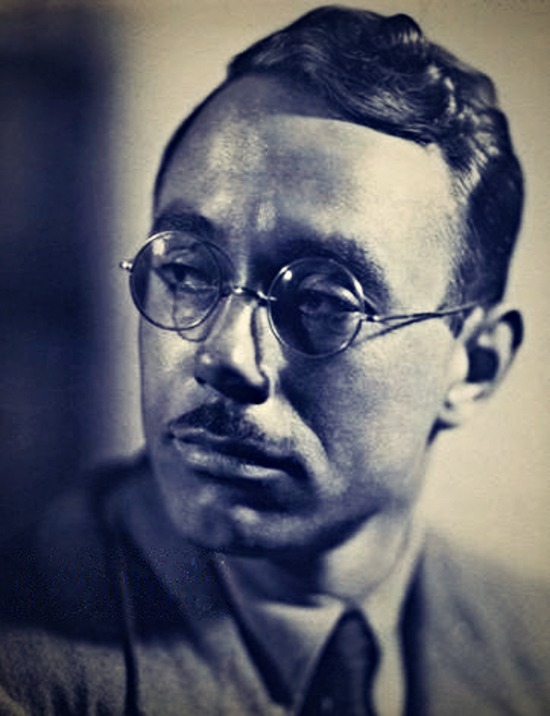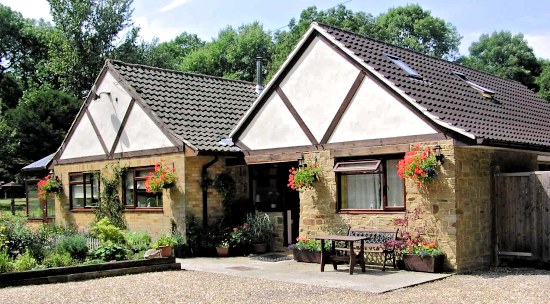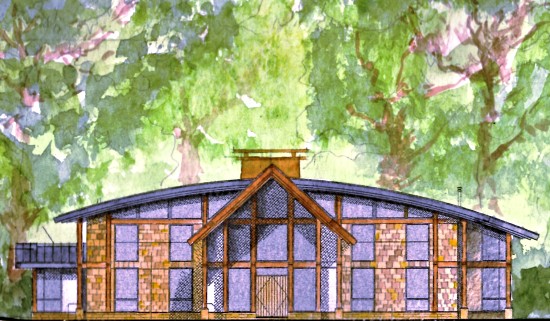Oldwood is the south west corner plot at the junction of Clappers Lane and Holmbush Lane. Originally part of a large apple orchard, it was the third of the five-acre plots bought by the architect Ernest Black. In 1912 there was an attractive cottage on the site, but this burnt down in 1933. Charles Clayton was Black’s partner in their architectural practice and it was one of Clayton’s daughters who produced the sketch of the cottage reproduced above.
Ernest Black sold the property to an American who used it as a holiday retreat. It was purchased next by Harold Alfred Manhood (1904–1991).
The editor of a recently published collection of Manhood’s short stories writes as follows:
H. A. Manhood was one of the most highly regarded short story writers of the 1930s. His work was praised by John Galsworthy, Henry Williamson, Hugh Walpole and H. E. Bates, who was to become a good friend. His British and American publishers, Jonathan Cape and Viking respectively, thought so highly of him that they paid him a salary to give him the time and space just to write, a most unusual arrangement which demonstrated their respect for his work. His stories were in demand both from popular papers such as the Evening News and John O’London’s Weekly, and from more literary periodicals such as the London Mercury and the Adelphi. They were included in annual ‘best short story’ anthologies and in retrospectives of the masterpieces of English Literature.
Manhood gave it all up at the height of his success and disappeared into the Sussex countryside to live in a railway carriage .. . Writer and auctioneer Frank Herrmann .. said after the war he began to resent growing editorial interference with his writing and was appalled by the tiny payments he received for his output. So in 1953 he stopped writing, bought more land, started brewing cider and never wrote another word. Shortly before his death aged 87, Manhood sold his life’s work to the British Library. [Mark Valentine]
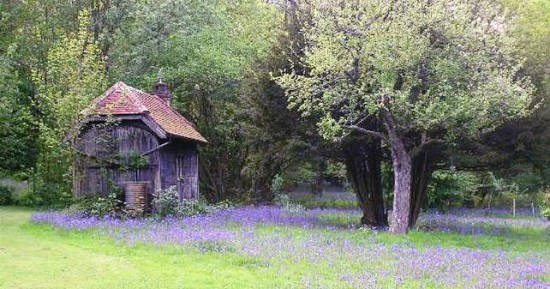
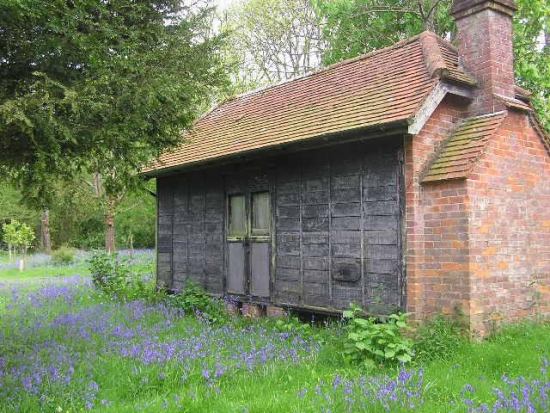
Oldwood became known as Manhoods. Harold Manhood originally lived there in old railway carriage (no longer on the site) and a small barn-like building which is still there today. This building, standing in an orchard as it does, may originally have been designed for apple storage. Later he had a bungalow with a garage built on the site. He was well known for the home brewed cider he produced from apples off the old trees in the grounds and it was not unknown for local lads to stop at his place for a drink before setting off for a night out in Henfield. He was also a regular customer at Springs Smoked Salmon and always insisted on choosing his own fish from the freezer room, a lengthy (and almost certainly chilly) process that occasionally involved inspecting up to 200 fish before he made his selection.
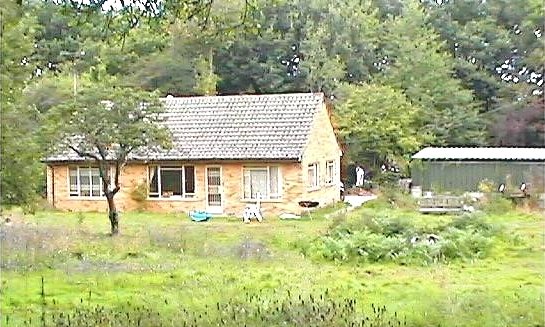
 Villagers recall that H.E. Bates (1905-1974) and Harold Manhood became great friends and it is thought that Bates wrote The Darling Buds of May (later to become a successful TV series) while staying with Manhood in the late 1950s.
Villagers recall that H.E. Bates (1905-1974) and Harold Manhood became great friends and it is thought that Bates wrote The Darling Buds of May (later to become a successful TV series) while staying with Manhood in the late 1950s.
Bates had reviewed some of Manhood’s books in the 1930s and was to become an enthusiast as well as a friend. However, in 1932, we find him writing:
Mr. Manhood writes like a Cockney in the country for half a day, very high-spirited, slick and robust, intoxicated into a kind of rollicking ecstasy of admiration of its beasts, fields, and wenches, but without either depth of understanding or authentic feeling. There is something counterfeit about more than half these stories; they look like gold but they ring so often like brass. [Review of Apples by Night in John O’London’s Weekly, October 29th, 1932, page 182.]
But, only a few years later, Bates had come to appreciate all of Manhood’s work and was to dedicate one of his own collections of stories (Something Short and Sweet) to him in 1937. Reviewing a later Manhood collection in 1939, Bates is wholly positive:
There can be no doubt of his calibre. He is almost too rich a writer, as the thirty stories in Sunday Bugles prove, for an age which exalts aridity. He is a cornucopia to an era growing too accustomed to drinking out of paper cups. To all who care for robust, full-coloured, originally flavoured writing, Sunday Bugles must therefore be warmly recommended. [Review of Sunday Bugles in John O’London’s Weekly, February 10th, 1939.]
And, in another review of the same collection, Bates has this to say:
Mr. Manhood is a poet forced by his own time and circumstances to write in prose. This could be said of a dozen other short story writers of to-day, but it seems pointedly true of Manhood, who treats the writing of prose as a tortured process of distillation or, more aptly, as the evolution of a pattern in verbal mosaic. All who know him are aware of the tortures that prose inflicts on him; those who know only his stories must be aware that deep embryonic struggles precede the birth of his beautifully plumaged sentences.
His work is consistent in its rare oddity and flamboyance, its prolific use of startling metaphor and violent climax, his method of using the fantastic to illustrate the ordinary, the ordinary to illustrate the fantastic. His stories are so full of the kind of conceits that embroider the work of seventeenth-century poets that I feel he would have been happier in an age where the rich uses of imagination were not looked on with suspicion. He sports rather too fine a doublet in this age of pin-stripes and umbrellas. [Review of Sunday Bugles in Now and Then 62, pages 39-40, Spring 1939.]
On Harold Manhood’s death in 1991, the property was sold to a retired farmer who added a barn to store his collection of old, working, farm machinery. It was then sold on to a waste haulage operator who constructed an extensive hardstanding for lorries on the land and explored the possibility of obtaining permission to erect a mobile phone mast on the site. After about a year, it was sold again to the former owner of the caravan park in Bramlands Lane. He took up residence and transformed the appearance of the bungalow by integrating the garage into the house. The grounds were also landscaped at this time.
Tony Brooks [with literary interpolations by GJMG]
References:
- Paul Machlis (2017) H.E. Bates Companion (website).
- H.A. Manhood (2017) Life, Be Still! And Other Stories, with an introduction by Mark Valentine. Sherborne: The Sundial Press.
[Copyright © 2017, Anthony R. Brooks. Adapted from Anthony R. Brooks (2008) The Changing Times of Fulking & Edburton. Chichester: RPM Print & Design, page 71-72.]
Currently popular local history posts:


